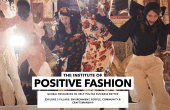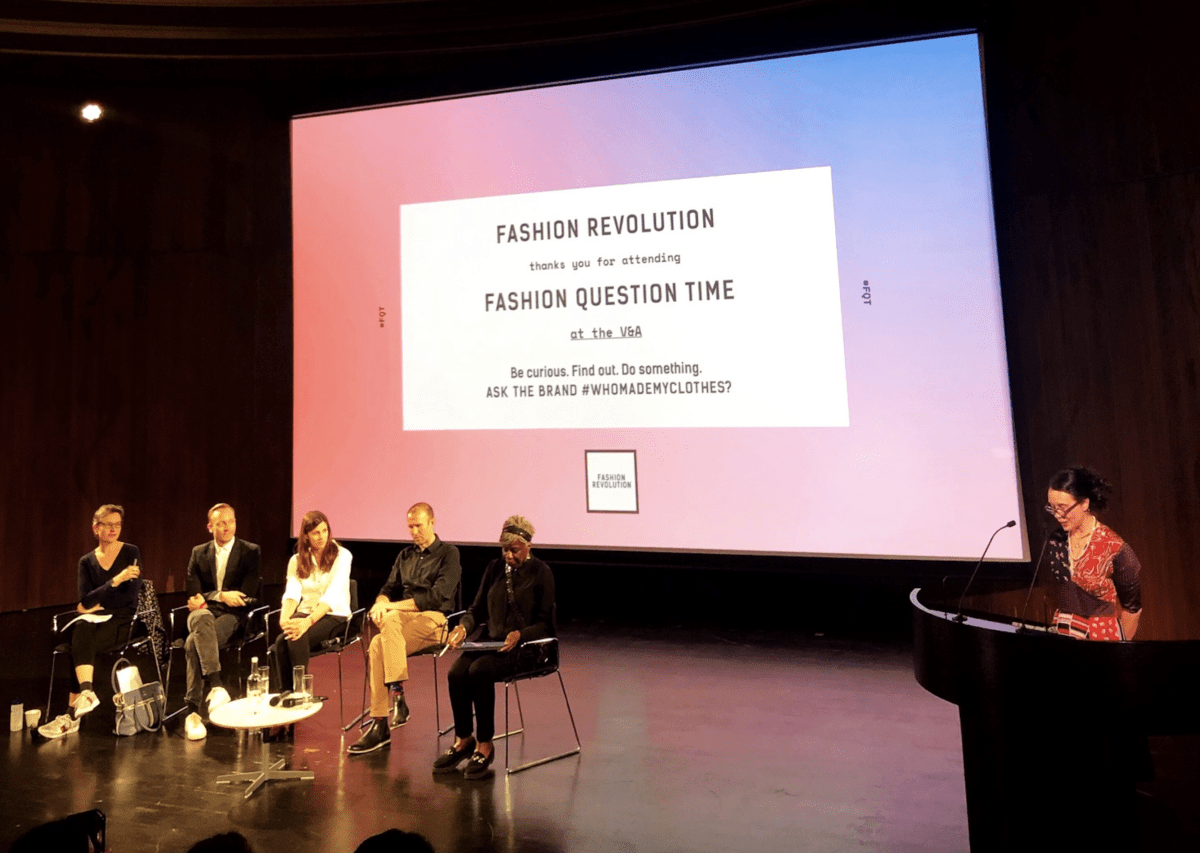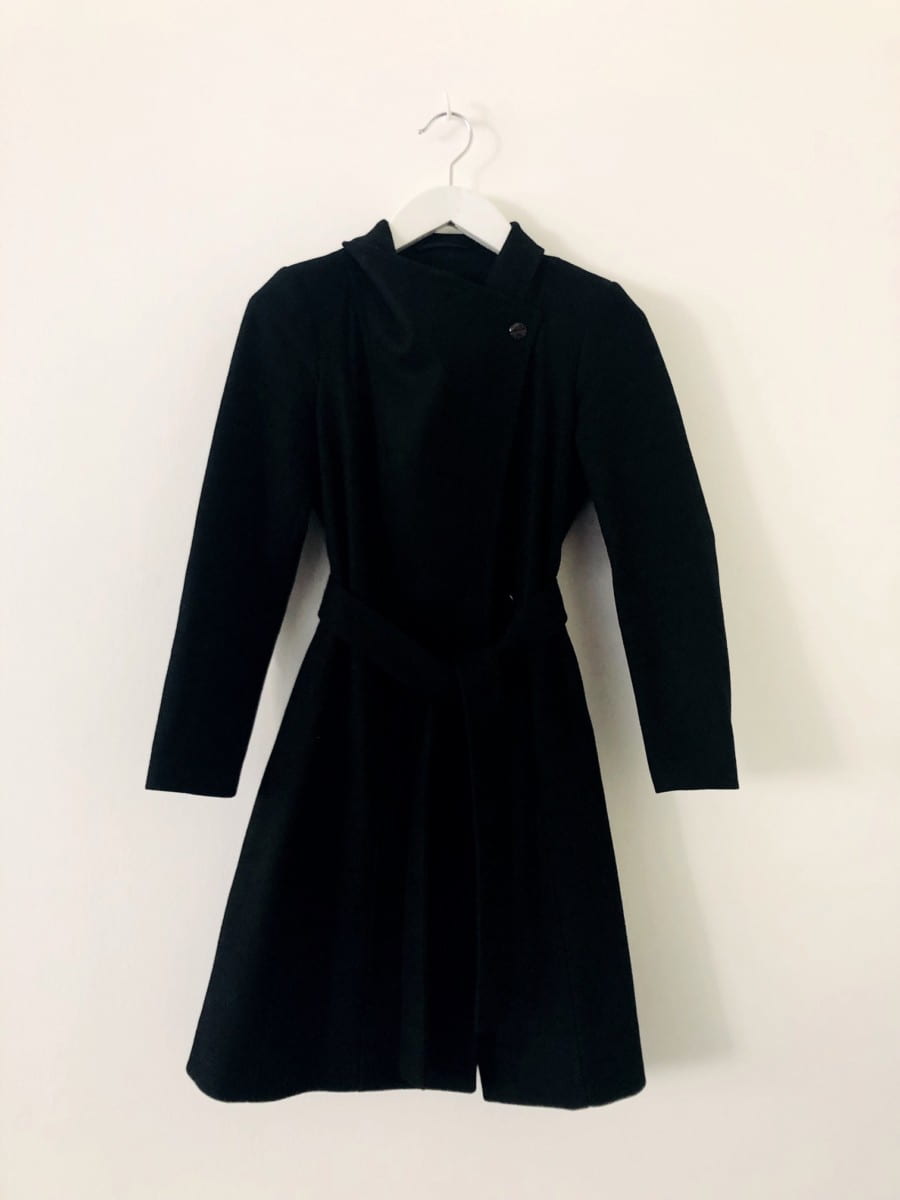
Vanessa Kingori is Publisher of British GQ Style & Associate Publisher Fashion, British GQ
Frances and I have often found ourselves in deep conversation about the many reasons why fashion is more than the sum of its parts, more than simply the clothes on our backs. Essentially, why does fashion matter?
What better place to consider this than London, one of the world’s few, true, melting pots.
This thought is shaped by two main influences – my work, which closely follows the business aspects of Fashion, and the evolution of my own personal style in the London context.
To the latter, presentation – and therefore clothes – has always been an important part of my life. Not from a purely superficial point of view – though it has to be said my enjoyment of fashion cannot be denied. I am not a follower of trends but I was always taught that what one wears can have social, psychological and economic significance (though perhaps not in such grand terms).
Successive waves of immigration and migration have thrown the best and brightest of myriad cultures together here. The result? London is arguably the global epicenter of individual style and fashion commerce.
I am a product of the city’s melting pot. Pre the globalized world we now know, where else but in London would my mother – a beautiful; wide-eyed; small-island Caribbean nurse – meet my father – a well spoken; immaculately suited; worldly; Kenyan scientists? Highs, lows and adventure ensued, and though 1970s London provided the setting and catalyst, it was not always an easy place for my parents and their cohorts.

Unlikely match:my mother and father with my sister, Patricia
During the ‘Windrush’ period, Commonwealth immigrants, invited to the UK to bolster the welfare state, often used immaculate and occasionally flamboyant personal presentation as part of the arsenal of defense in the sometimes-hostile reaction from portions of established British society.
Such factions reacted with fear to the influx of immigration in the late 1940s, 50s and 60s and the rapid change to their established way of life. The reaction of many black migrants was to ‘peacock’. To don their Sunday best and be so well presented that the taunts of their aggressors were invalidated. How could they be called dirty, irresponsible, dangerous or a drain on society when they were wearing hand-made suits (always worn with their own personal twist and flair)? How could they be accused of laziness when they had clearly taken hours to fix their hair and hand-sew their dress? Being better dressed than those firing insults became a matter of personal pride and emotional protection.
Fashion is the source of fun and unifying force that created modern Rude Boy style, Buffalo style and many other trends. The music of the soundtrack to this mindset meant these trends eventually infiltrated the mainstream. Using fashion as a response to such social issues has inspired countless books, albums, exhibitions, and fashion collections since.
From the moment we were born, my sister and I were dressed up. My mother and grandmother invested vast amounts of time and large dollops of pleasure in coordinating us. With the combined effort of my grandfather (whom is still the most dapper man I have ever encountered) they would preach various mantras and proverbs as our handbags were being matched to the ribbons in our hair – ‘you never get a second chance to make a first impression Vanessa’; ‘people reflect back what you present to them’; ‘when you feel your worst is when you should look your best’; ‘clothes maketh the man’; ‘if you look like you can conquer the world, you’ll feel like you can conquer the universe’… and so they would continue until we were suitably jazzy and ready for the day’s events.
In my parents’ and grandparents’ eyes, fashion matters. Survival, success and mental resilience are inextricably linked to the way one dresses. These mantras have never left me. They, coupled with a strong determination to validate the challenges endured by previous generations, still guide me and have played a strong part in my successes to date.

My sister and I in typical coordinated flare
And so to the world I operate in today and my work. Fashion as business. As Publisher of a style magazine, the performance of fashion brands and the health of the global fashion industry are integral to the success of the title for which I work. Monitoring this is somewhat of a necessary sport.
From the London vantage point fashion is big business. As in the case of ‘Windrush’, waves of social and economic shift in the UK’s long and rich history have spawned countless fashion trends and given birth to iconic talent. The tremors are felt on a global scale. Punk, Teddy Boys, Mods, Dandies, New Romantics, Sixties hipsters, Sloanes, and the afore mentioned Buffalo movement have given rise to some of the fashion trends Britain has given the world.
London today acts as the pounding heart of global fashion. The place where UK trends are honed, poured over, repackaged and presented, ready to pump into the wide veins of the international fashion set.
This phenomenon largely guided the current issue of GQ Style’s theme – the London issue. A celebration of the incubator of global style and the people who bring this to life.
The issue observes the high stakes ‘fashion exchange’ that London has become. British fashion and talent are exported to the world, whilst international brands are keen gain the approval of the city’s zeitgeist-setting audience by setting up their stalls here.
The former element of this exchange is not only evident in the global trend setting already explored but is also powerfully illustrated by the number of British designers at the creative helm of Global fashion brands. Kim Jones at Louis Vuitton, Phoebe Philo at Celine, Jonathan Anderson at Loewe, Stuart Vevers at Coach… Each of these brands remains strongly linked to their heritage country yet Brits are the shaping their destinies.
And as if in exchange – an enviable number of fashion brands have shunned the recession and austerity to open impressive new retail spaces in London. It can often feel I’m at an ever more elaborate brand launch/re-launch/expansion event from evening to evening. From John Varvatos’ rock-royalty adorned boutique on Conduit Street (the Klaxtons, Hives, Paul Weller, Miles Kane and campaign model Ringo Star were all flying the flag for British style on launch night), to Fendi’s power-glamour launch on Bond Street, To the Pradasphere at Harrods and everything in between. The desire to retail in London is irresistible.
The recent launch that had us all talking on GQ Style was that of Rick Owen’s residency at Selfridges. At a summer lunch at Selfridges’ roof top restaurant, the retailer’s Buying Director, Sebastian Manes, enthused about the plans for the ‘World of Rick Owens’ takeover at the London department store. To compliment Owens’ existing Mayfair stand-alone boutique, he and Selfridges promised to create one of the most elaborate retail experiments we had encountered in some time.
Talk of a 20-foot statue of the designer with 6-foot torch burning at the retailers’ main entrance was peppered with mentions of book signings, an exclusive Selfridges collection, key window takeover (with art installations featuring no sellable product!), a new menswear shop-in-shop, and a new women’s wear concept. The excitement was infectious.
What could encapsulate the daring spirit of London’s style savvy better than the risky nature of this project and the designer’s desire to thrill the London crowd? Arguably there are few other places in the world where this could happen. At a time when many in fashion and business more generally are applying caution – Rick Owens and Selfridges filled their windows with installations that aren’t even for sale. The mere choice of designer to collaborate with is bold. Owens has long been a successful brand at Selfridges but he himself admits he may ‘alienate people’ whilst Manes reflects that Owens ‘avoids the mainstream’.

Rick Owens and his Selfridges Statue
If there is one city in the world where an arguably divisive designer can be given such a large platform it is here – trusting the London population to make up their own mind whether to adopt, adapt or avoid can and according to initial reports, is having great results for the brand and Selfridges.
This is the reason why we at GQ Style have celebrated this maverick move with a special collectors cover of the autumn winter 2014 London themed issue. Two hundred limited edition and individually numbered copies celebrates Rick and his muse, Beniot Taupin. The issues are exclusively available in the Selfridges Concept Store. Of the 200 copies produced, Owens himself has signed 30. Readers learn if they are one of the extra lucky ones once they are in possession of a copy and the specially commissioned sleeve is removed.
So here in London fashion matters because it allows the taking of creative chances, even in a challenging economic environment. Fashion electrifies the city with each London Fashion week, each London Collections: Men, every ever-more exciting store launch, party, collaboration and all the fantastical spectacles and opportunities these create.
Fashion matters here because ‘UK cool’ remains a significant cultural exports and a lucrative one at that. It keeps the world striving to get the London look…. whatever that may be.
It matters as a means of expressing ones social, and even political position. It can be a means of reflecting one’s musical taste, or personal ambition. And though trends are important, for many Londoners fashion is very much about expressing their individuality.
So fashion really does matter. It is an industry that continues to thrive during economic downturn and austerity. Hordes of professions rely on the fashion economy for their livelihoods – designers, stylists, cutters, photographers, models, bloggers, vloggers, sales people, editors and, indeed, publishers. So it certainly matters to me.


GQ Style autumn winter 2014 issue is on newsstands now or download the digital edition here: http://bit.ly/1r33yAr
200 Limited Edition Rick Owens collaboration issues are on sale in the Selfridges London Concept Store – £20 per copy. 30 random issues are signed.




